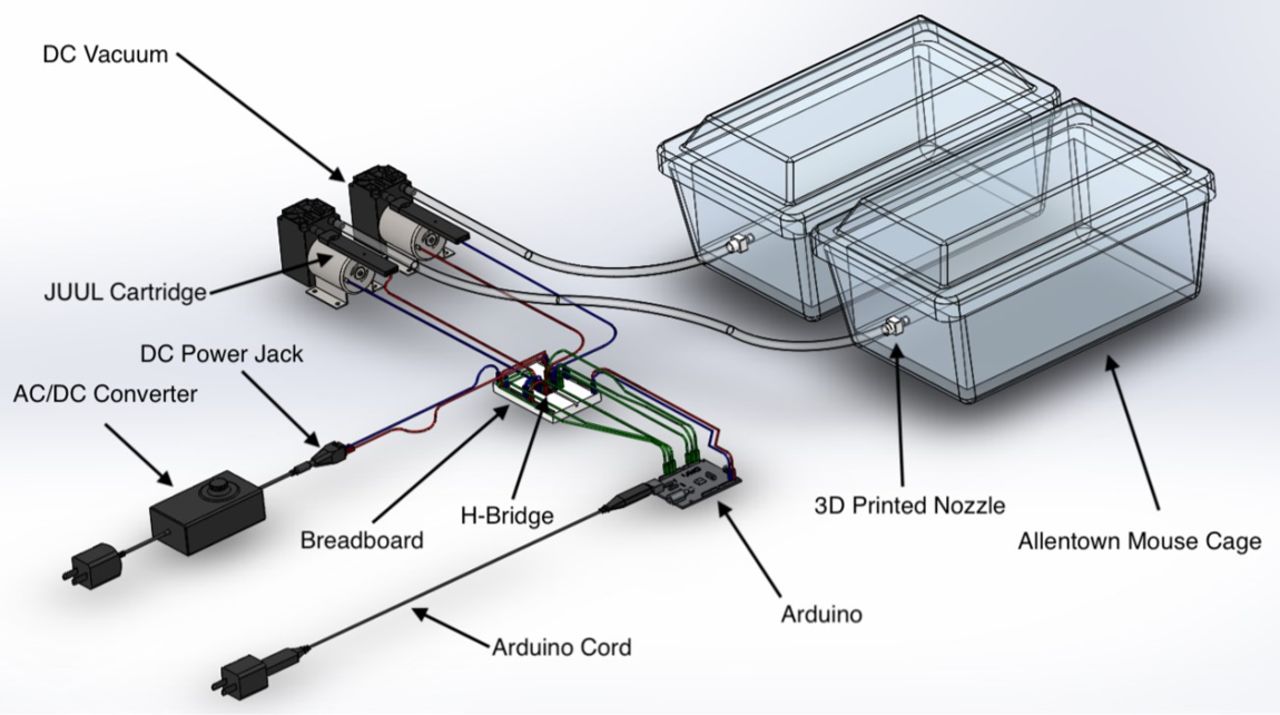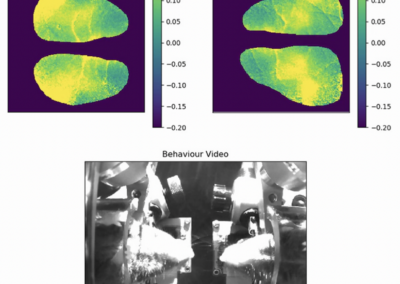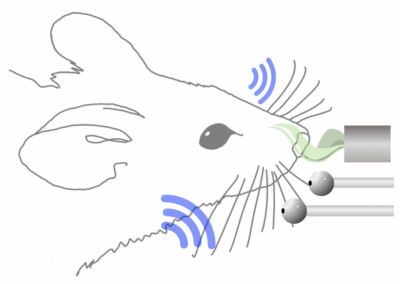In a recent paper published in eNeuro, Jude Frie and colleagues from Ontario, Canada present a new, open–source, low–cost, and versatile e-cigarette vapor exposure device: OpenVape. Additionally, the authors also tested the OpenVape device by performing a behavioral study and a pharmacokinetic study; the data from these studies are also discussed in their paper to demonstrate OpenVape as a reliable and applicable open-source neuroscience tool. OpenVape is a vapor exposure apparatus comprised of an Arduino Uno microcontroller that relays coded instructions to an H-bridge motor controller; the H-bridge then sends the specific signals to the motors that regulate the produced vapor sent to exposure chambers. Further, one major benefit of the OpenVape device is that it can be easily customized for a variety of vaporizers including those that use nicotine pods or tanks, and even cannabis flower or concentrate vaporizers. The Arduino code is also customizable, allowing users to choose the vapor delivery pulse time and pulse interval time specific to their vaporizer device. The code for the Arduino, as well as detailed instructions for constructing OpenVape and a materials list, are available at the Khokhar Lab website listed below. Also available on the website is a custom printed circuit board (PCB), which is plugged into the Arduino to control all logic commands and replaces the H-bridge and other wired connections. The PCB provided on the website helps simplify the OV’s construction and decreases cost! Without the PCB, the OV device still only costs $230 CAD, or roughly $180 USD, to build per apparatus. Another benefit of OV is that users do not need extensive coding or circuit experience to build or use the device due to the simplicity of OV’s construction and programming. Given the growing prevalence of nicotine vaping and e-cigarette use among adolescents, along with the fact that many popular e-cigarettes have high nicotine content, it is increasingly important to conduct research on the effects of nicotine vapor. However, many of the nicotine vapor exposure devices that are commercially available are extremely expensive and are restricted to proprietary software and hardware for operation. Many of these aerosol exposure devices also lack compatibility with new vaping devices. Even alternatives to commercially available devices are expensive, may not be open source, and are complex. To answer some of the barriers and complications surrounding previously available aerosol exposure devices, OpenVape was created. OpenVape is low cost, compatible with a range of vaporizers, is simple in construction and operation, is customizable, and is open-source! Additionally, all of the OV components are outside of the exposure chambers, which mitigates the possibilities of animals harming themselves and device damage. Despite the simplicity of OV’s construction and operation, the device is a reliable and relevant neuroscience tool. Frie and colleagues conducted a conditioned place preference behavioral study using the current most popular e-cigarette called JUUL. Through the study, Frie and colleagues found that brief exposure to nicotine vapor from JUUL devices were enough to produce conditioned place preference in rats. Additionally, they found that nicotine vapor, when delivered in adolescence, may have greater reward-like properties, which is consistent with previous studies involving nicotine exposure. The other study conducted by Frie and colleagues measured plasma nicotine and cotinine concentrations, and found that plasma nicotine and cotinine levels could be detected even after brief exposure. The plasma nicotine levels seen with the 8 minute nicotine vapor exposure group is consistent with those found in nicotine injection studies, and are comparable to levels seen in adult cigarette smokers. These studies and findings demonstrate that OpenVape is highly reliable, relevant, and applicable in behavioral studies and pharmacological studies. The huge benefit, though, is that this device is open source! This research tool was created by your colleagues. Please acknowledge the Principal Investigator, cite the article in which the tool was described, and include an RRID in the Materials and Methods of your future publications. RRID:SCR_021485 Read more about this project in the eNeuro publication! Get access to the code from the Khokhar Lab website! This project summary is a part of the collection from neuroscience undergraduate students in the Computational Methods course at American University.OpenVape

Read the publication!
Read the Documentation
Thanks Olivia!
Have questions? Send us an email!







